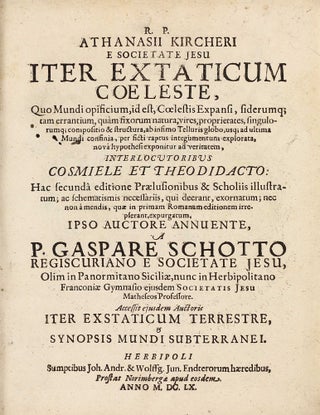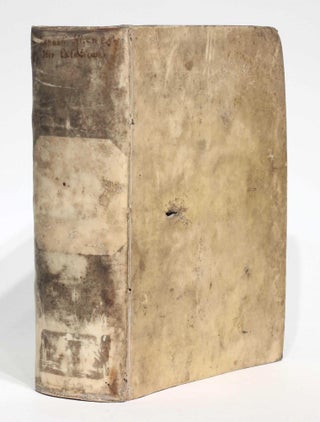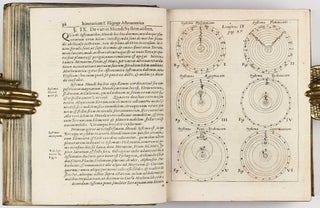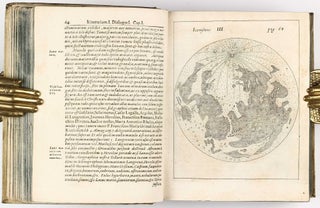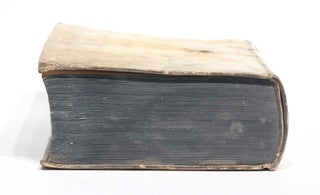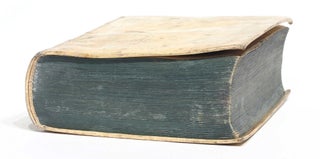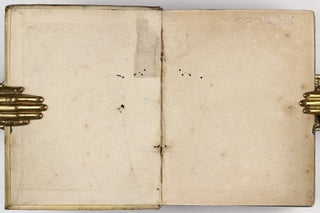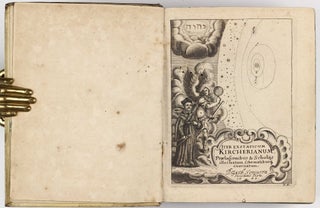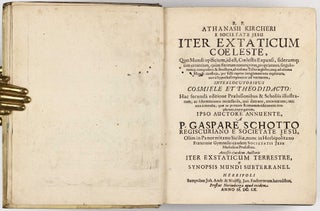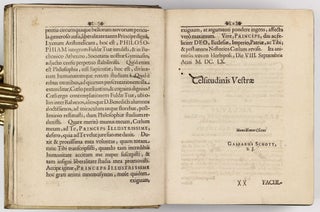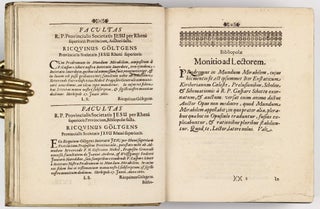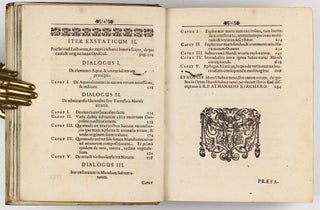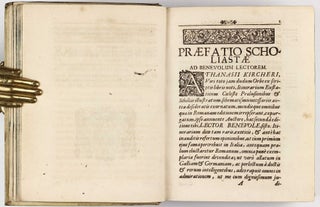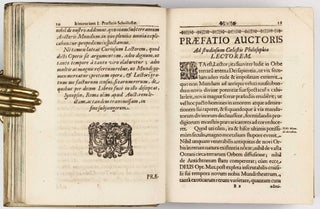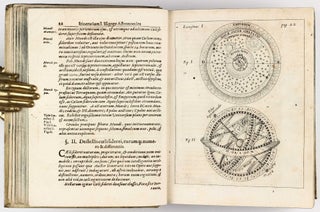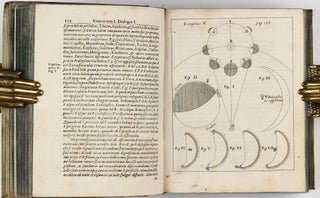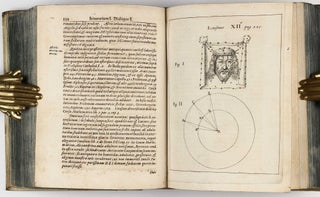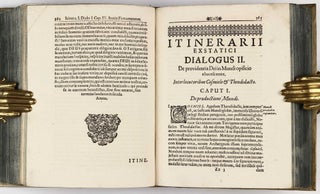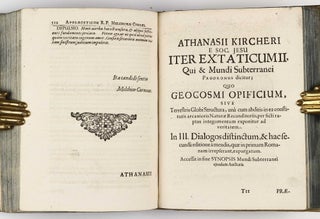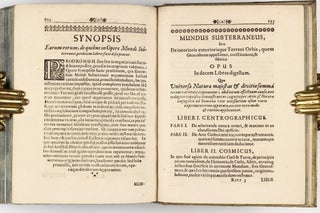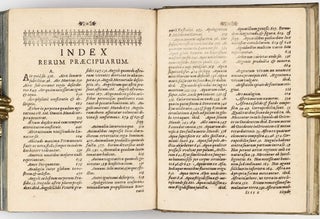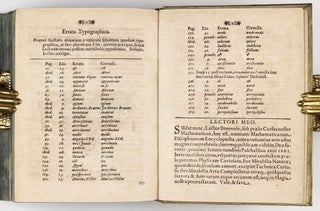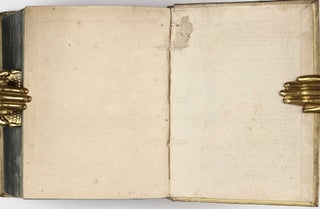Iter extaticum coeleste.
Würzburg: heirs of J.A. & Wolfgang Endter, 1660.
2nd Edition. Hardcover. Very Good. Item #002115
Iter extaticum coeleste, Quo Mundi opificium, id est, Coelestis Expansi, siderumq[ue] tam errantium, quàm fixorum natura, vires, proprietates, singulorumq[ue] compositio & structura, ab infimo Telluris globo, usq[ue] ad ultima Mundi confinia, per ficti raptus integumentum explorata, novâ hypothesi exponitur ad veritatem, interlocutoribus Cosmiele et Theodidacto. Würzburg: heirs of J.A. & Wolfgang Endter, 1660. 4to (201 x 157mm). [24], 689, [18] pp., engraved title, full page engraved coat of arms and 12 engraved plates. Contemporary vellum (stained, with worming), blue dyed edges. First leaves with worming affecting some letters, otherwise quite crisp and clean with virtually no browning or foxing. A very good copy in untouched binding. ----
Merrill 12 & 14; Caillet 5775; De Backer-Sommervogel IV, 1056-57.14 - Second edition, enlarged and edited by the author's friend and disciple, Gaspar Schott. The first edition of 1656 did not contain any illustrations. This is one of Kircher's most curious works in which a certain Theodidactus, a personification of Kircher himself, has a dream of a journey through the heavens guided by the angel Cosmiel. In the first dialogue Kircher tells of a journey to the moon, which he finds full of mountains and craters. He continues on to Venus, and then on to each of the other planets and to the region of the fixed stars. The sun has blemishes, he announces. He himself had seen sunspots through his telescope some years earlier. Kircher rejected the Aristotelian and Ptolemaic cosmologies for that of Tycho Brahe, who had argued that the sun orbits the earth and is in turn orbited by the planets and the fixed stars. This system was adopted "by most of Kircher's fellow Jesuits, since it allowed them to maintain geocentric orthodoxy while espousing, at least in part, the new, more scientific heliocentricity advocated by the Copernicans" (Merrill).
Sold
Delivery time up to 10 days. For calculation of the latest delivery date, follow the link: Delivery times
Lieferzeit max. 10 Tage. Zur Berechnung des spätesten Liefertermins siehe hier: Lieferzeiten



